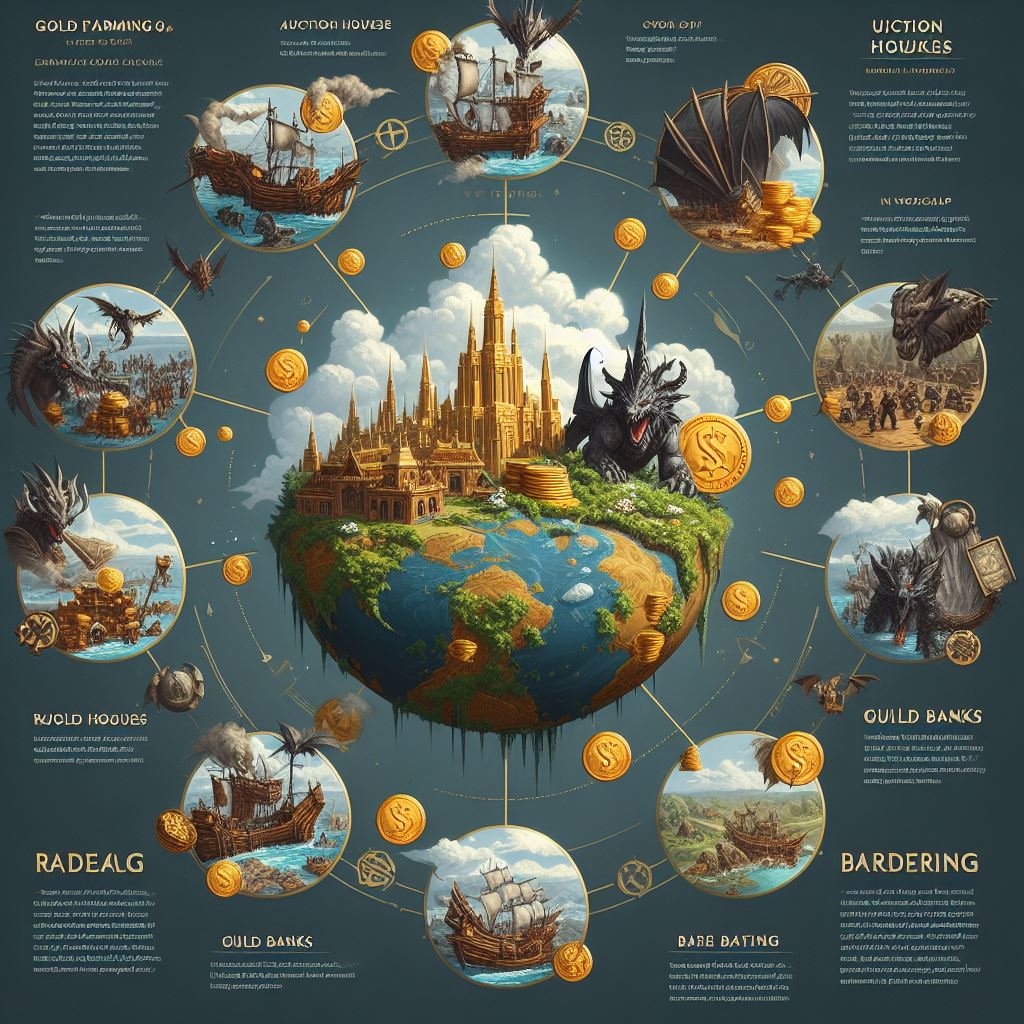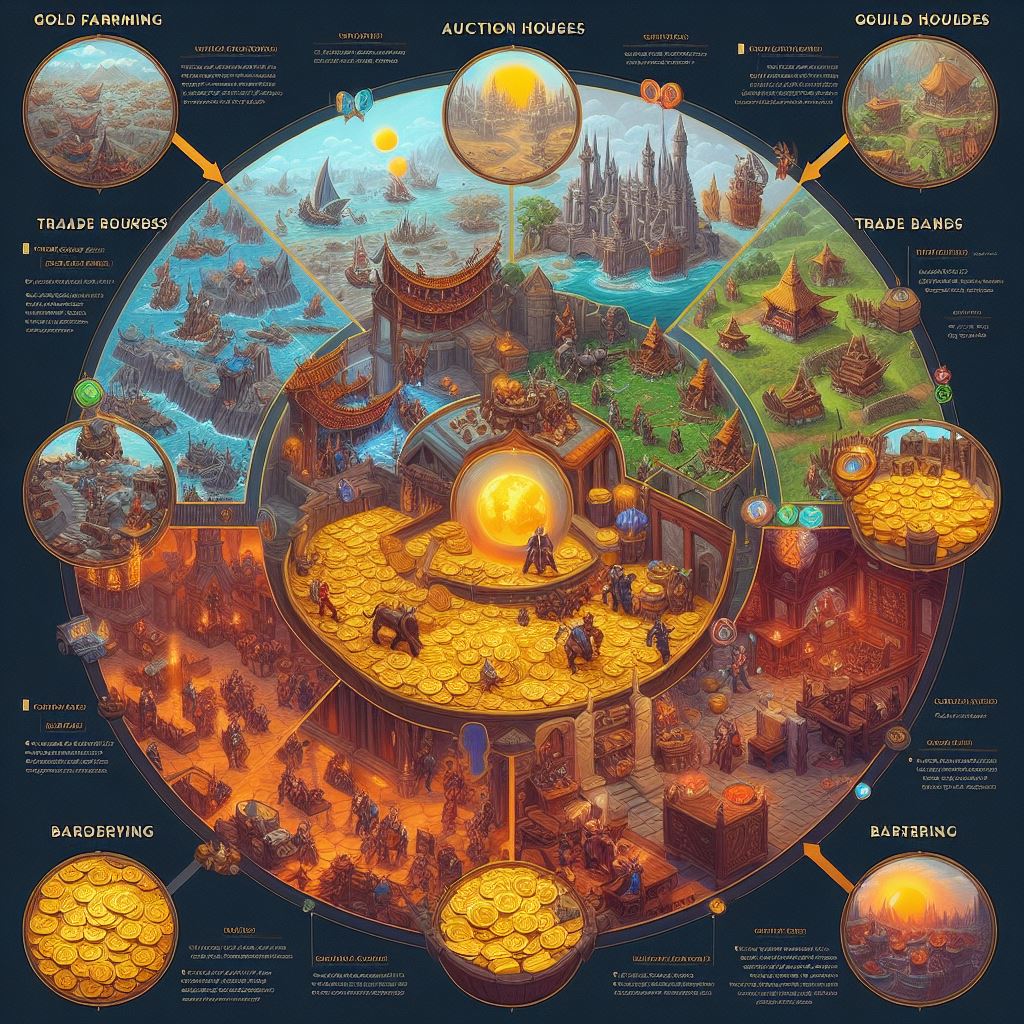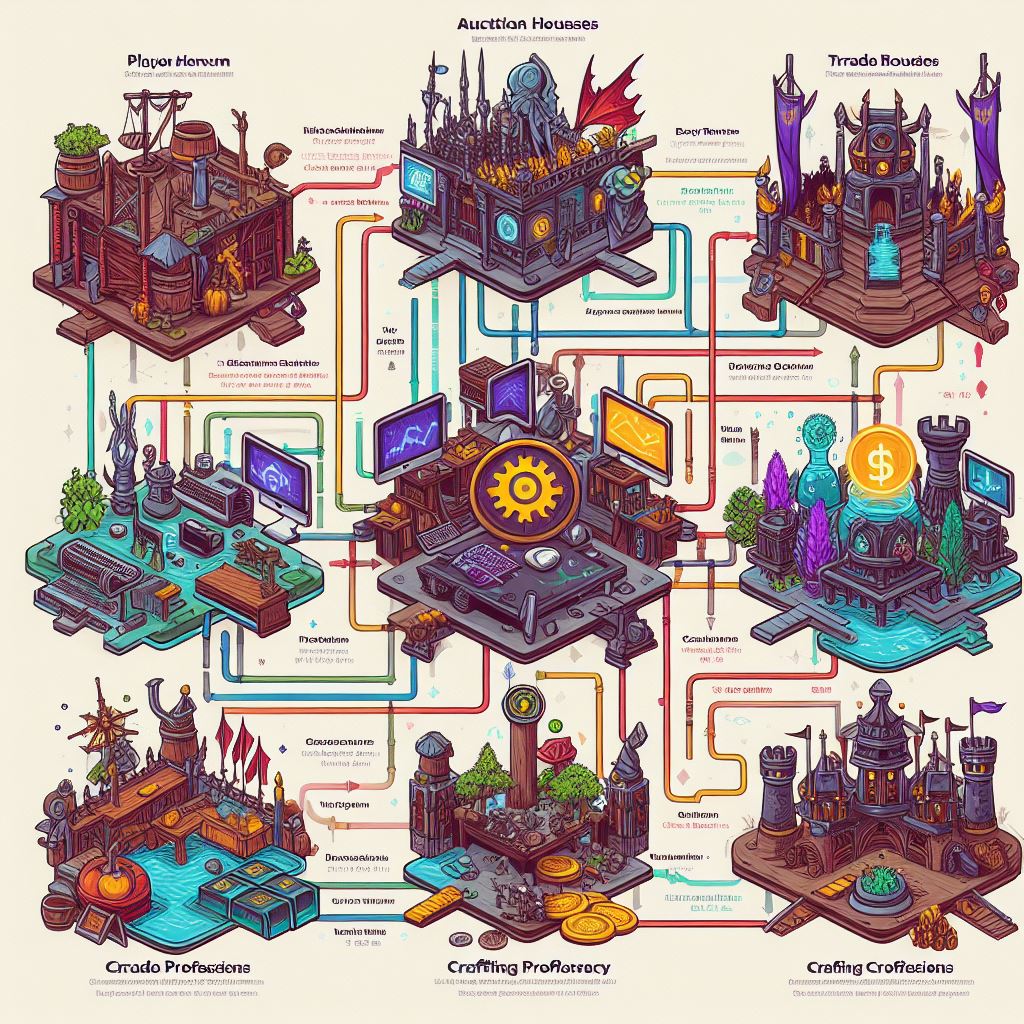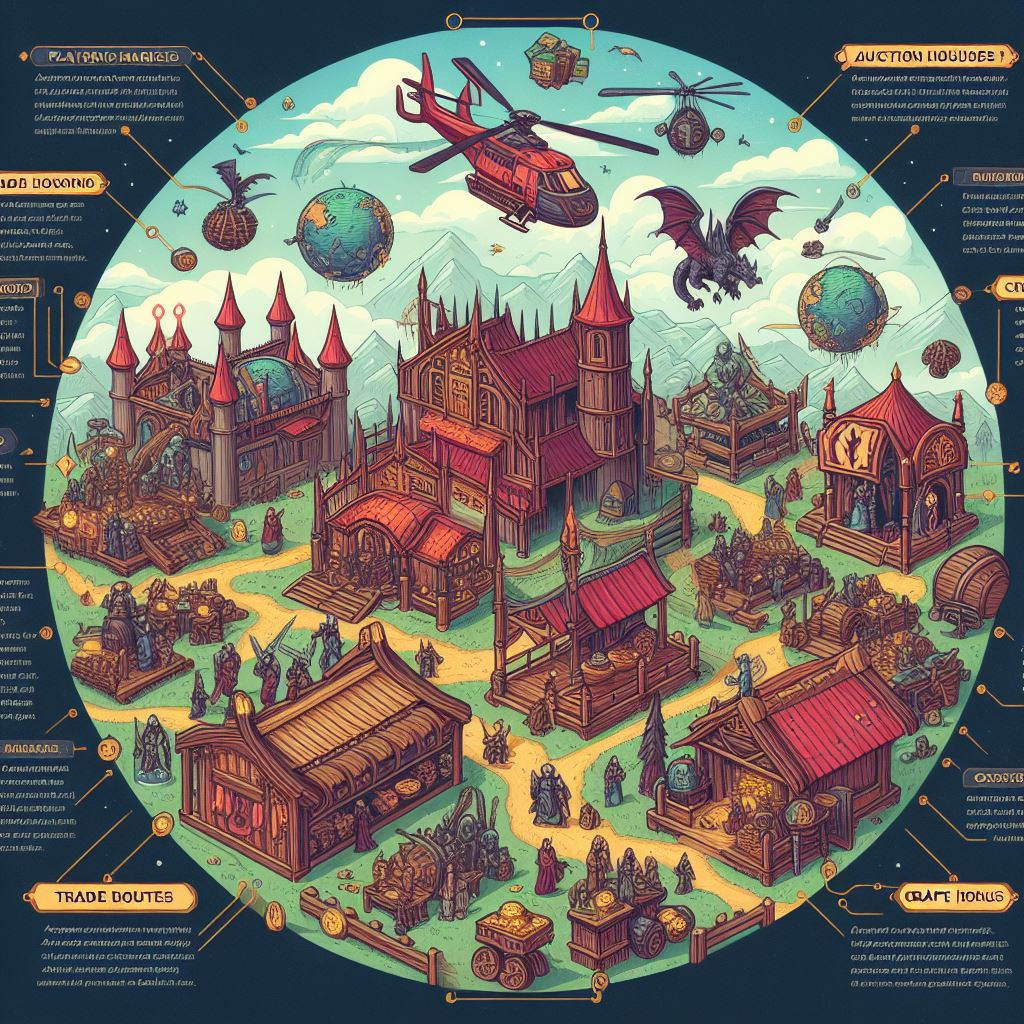Introduction
World of Warcraft (WoW) isn’t just a realm of quests and epic battles; it also features a complex, thriving economy that mirrors many real-world economic principles. This economy impacts every aspect of gameplay, from the strategies that players adopt to the progression of their characters. Understanding this economic system not only enhances player engagement but also offers insights into resource management and financial strategies that can even transcend the game.

Basics of Economic Interaction in WoW
The foundation of WoW’s economy is built on the interactions between players through the trading and auctioning of goods and services. Gold, the primary currency, serves as the lifeblood of this virtual economy, facilitating trade and valuing goods and services across the vast world of Azeroth.
The Role of Gold: The Primary Currency
Gold in WoW functions much like money in real-world economies. It’s used to purchase gear, spells, mounts, and other essential items that enhance gameplay. The acquisition of gold can be straightforward—completing quests, looting monsters, and selling items to vendors—or complex, involving the strategic buying and selling of items on the auction house to capitalize on market trends.
Trading Goods: How Players Exchange Value
Trading is a direct way for players to obtain specific items or commodities that are otherwise hard to find or expensive to purchase via regular vendors. This direct exchange between players fosters a dynamic community that is constantly assessing the value of items in a fluctuating market.
Understanding the Auction House Dynamics
How the Auction House Works
The Auction House in World of Warcraft is a critical component of the in-game economy, serving as a marketplace where players can buy and sell items. Players list their items for sale, setting a starting bid and optionally a “Buyout” price that others can pay to immediately purchase the item. The auction runs for a set period, during which other players can place bids. Once the auction ends, the highest bidder wins the item. This system mirrors real-world auction dynamics and requires strategic pricing and market analysis to maximize profits. https://buyboost.com/

Strategies for Effective Auctioning
Successful players in the Auction House not only understand the current market value of items but also anticipate future trends and shifts in demand. Key strategies include:
- Bulk selling: Selling items in bulk can attract buyers looking to acquire materials for crafting.
- Timing: Aligning item sales with peak playing times or around game updates when demand can surge.
- Market analysis: Regularly tracking which items sell well and adapting to these trends to stay ahead of the competition.
Impact of Market Fluctuations on Player Decisions
Market fluctuations can drastically affect gameplay strategies. For example, a sudden increase in the availability of a rare item might decrease its value, prompting players to sell other assets to maintain economic stability. Players need to constantly adapt their strategies to these changes to ensure they are maximizing their economic potential.
Player Strategies Shaped by Economic Systems
Resource Management and Accumulation Techniques
Effective resource management is vital for economic success in WoW. Players must decide whether to use resources immediately or store them for future use, potentially increasing their value. Efficient resource management can lead to significant advantages in both the short and long term.

Optimizing Resource Gathering
Choosing the right professions is crucial for maximizing resource gathering. Professions like mining, herbalism, and skinning allow players to collect valuable materials used in crafting and selling. Strategic gathering—focusing on areas with high yields or rare materials—can significantly boost a player’s economic status.
Crafting for Profit: Choosing the Right Items
Crafting can be a lucrative aspect of WoW’s economy if players choose their products wisely. Understanding which items are in high demand and scarce in supply can lead to profitable crafting ventures. Keeping abreast of changes in the game, such as new expansions or updates that could shift the market, is essential for crafters aiming to maximize their profits.
Economic Influences on Gameplay and Character Progression
Economic Success and Character Development
Economic prowess in WoW can directly influence character progression. Players with substantial economic resources can afford better gear, potions, and enchantments, which can significantly enhance their performance in both PvE (Player versus Environment) and PvP (Player versus Player) scenarios. This creates a direct correlation between a player’s wealth and their effectiveness and status within the game.
How Wealth Affects Player Status and Opportunities
Wealth allows players to access exclusive content, such as high-level raids and dungeons, by enabling them to purchase entry requirements or gear up quickly. Additionally, economically successful players often hold influential positions within guilds or communities, further highlighting the importance of the economy in shaping the social structure of the game.
Inflation and Deflation in WoW’s Economy
Like any dynamic economy, WoW experiences periods of inflation and deflation. Inflation occurs when the influx of gold from various sources exceeds the gold sinks (ways in which gold is removed from the economy), leading to higher prices for items. Conversely, deflation can happen when gold sinks remove more gold than is being introduced, causing item prices to drop. Players must navigate these economic waters carefully to maintain their purchasing power.
External Factors Affecting WoW’s Economy
Real Money Trading (RMT) and Its Implications
Real Money Trading, where players buy in-game currency with actual money, poses significant challenges to the integrity of the in-game economy. Although against WoW’s terms of service, RMT can lead to inflation, as it increases the amount of currency circulating within the game without corresponding increases in goods and services.

The Battle Against Gold Farming
Gold farming—engaging in repetitive actions to generate gold—distorts the in-game economy by concentrating wealth in the hands of few. Efforts to combat gold farming include monitoring unusual trading patterns and imposing sanctions on accounts found to be engaging in these activities.
How RMT Shapes the In-Game Economy
RMT not only affects the game’s economy by altering supply and demand but also impacts the gameplay experience for other players. Those engaging in RMT often have a significant advantage, being able to afford items and experiences that others cannot, which can lead to a disparity in player experiences and satisfaction.
Future Prospects of WoW’s Economic System
Predicting Changes and New Features
As World of Warcraft continues to evolve, so too does its economy. Predicting upcoming changes involves understanding current economic trends and anticipating future updates and expansions. These changes can include new items, professions, and economic mechanisms that could shift the entire economic landscape.
Technological Advances and Their Economic Impact
Technological advancements within the game, such as improved AI for managing the Auction House or new interfaces for trading, can streamline economic transactions and alter the economic balance. These changes not only make trading more efficient but also affect how players strategize economically.
Community and Developer Interaction
The relationship between the community and the developers is crucial in shaping WoW’s economic system. Feedback from players often leads to adjustments in the game’s economic policies, ensuring a balanced gameplay experience that can sustain a vibrant and engaging economic system.